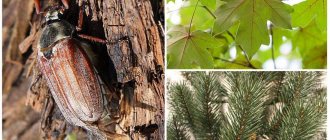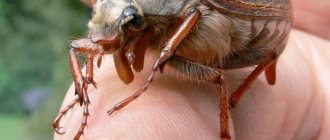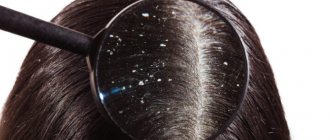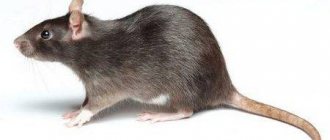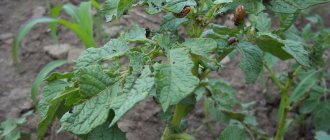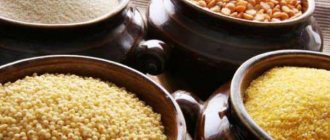Danger level of the cockchafer
The beetle's danger level is quite high.
Presence of 1 larva per 1 sq. m area is the threshold of harmfulness of the cockchafer. A survey of forest and park lands, garden plantings in some regions recorded the presence of 2-3, and near forest belts - up to 20 or more larvae per square meter. m. Under favorable conditions, there is a rapid increase in the number of the pest and a period begins, after about 20-25 years, of mass flight, which lasts up to 3-4 years.
An approximately 10-year break is necessary for cockchafers to intensify reproduction before the start of the next mass flight with the capture of new areas.
What does a larva and an adult look like?
To decide how to deal with the May beetle and its larvae (chafers) in the garden and in the garden, it is necessary to distinguish this pest by appearance.
It is simply impossible to confuse the May beetle itself and its larvae with anyone else. Outwardly, he does not look like any of them. It grows to a length of about 2 cm. Its body is covered with a chitinous shell. It is orange or red in color. The larva is quite large in size, looks like a huge white, almost transparent caterpillar, with many legs.
In the 4th year of its life, around mid-summer, the larva enters the pupal stage of development. At the same time, it acquires the features of an adult beetle. Already in the fall, it turns into a full-fledged young beetle. For the winter, the young beetle will burrow deep into the ground and quietly overwinter it.
Marbled Khrushchev: description and living conditions
The marbled beetle is an insect with a multi-year development cycle, similar in structure to the cockchafer. Distributed in Southern Europe, Ukraine and partly in Russia. In Kazakhstan, Central Asia and the steppe zone of the Black Sea region, it has a similar analogue (in appearance and habits) - the Khrushchev beetle, completely covered with white scales. The Caucasian July Khrushchev lives in the Caucasus.
Marble Khrushchev: description
Belonging to the lamellar beetle family, the beetle is characterized by a black-brown color and fairly large dimensions (about 30-45 mm in length).
A distinctive feature is the elytra, head and pronotum with multiple whitish spots forming a marbled pattern. The abdomen is pubescent, covered in light gray hairs. The front legs are digging, about 35 mm long.
The antennae are brownish-rusty, geniculate, fan-shaped, curved, with a club consisting of 7 plates. Females have more modest ones, with 5 short parts.
Conditions of existence
The July marbled beetle appears en masse at the end of June, at a steady temperature above +10°C. Hiding in the upper layers of the soil during the day, such insects fly out in the evening.
They prefer grape leaves, oak leaves and pine needles as food. Moreover, females are inactive; It is mainly males who fly short distances.
When the sun rises, the marbled beetle burrows into the ground or remains on the tree.
Such insects also prefer to mate in the evening. The eggs, characterized by a white color and an oblong shape, are laid by the female in the soil; The fertility of one individual is about 50 eggs.
Over the course of a month, white larvae with a curved thick body, measuring about 7.5 cm in length and 1.5 cm in width, emerge from the egg. The head is light red, without eyes. They develop over 3 years, waiting out the winter period in the soil at a depth of about 1 meter.
After three winterings, in the second half of June the larva enters the pupation stage; Pupa size is about 40 mm. The marbled beetle emerges from it after 3 weeks. In shaded and cool places, the development period of the larvae can be extended for another year: it will enter the pupation stage after 4 seasons.
Marbled beetle larva: damage caused
An adult beetle eats little, so it does not cause significant harm to plants. The most dangerous pests are its larvae. Being in the first instar stage, they feed on humus and young plant roots.
In the second period of development, the roots of fruit trees and grape cuttings are damaged, which causes the death of plants. They readily eat potato tubers, beets, garlic, onions, cabbage, rapeseed, and corn. Individuals of the third instar simultaneously eat up the roots of old trees.
Preferring to settle on poor soils, where plant immunity to diseases and pests is reduced, the larvae of the marbled beetle cause enormous damage to young plantings of vineyards and fruit trees. They increase their activity several times in the absence of moisture in the soil. There have been cases of almost complete (up to 70%) destruction of grape cuttings planted on the banks of the Dnieper.
Biological method of protection
There are several ways to fight marbled beetle larvae, which should preferably be carried out in combination with the others.
This is a biological method that uses natural enemies of the marbled beetle, in particular Scolia quadripunctata. Easily searching for the larva of a potential enemy in the ground (moving towards it almost in a straight line), Scolia paralyzes the victim with an injection, after which it lays an egg in its abdomen.
Sometimes the egg does not lay, but the victim struck by the injection still dies. The hatched Scolia larva uses the host larva as food - a kind of always fresh food: immobilized, but with ongoing blood circulation. Then the process of transformation into a pupa and into an adult insect occurs.
It is recommended to sow flowers for several years in a row, thus ensuring continuity of the process of destroying the pest.
Fighting methods
In order to protect cultivated plantings from marbled beetle, it is recommended to treat the root system of seedlings with insecticides. Contaminated soil must be treated with pesticides.
The marbled beetle mainly inhabits areas of treeless wastelands, therefore, in the areas where it lives, it is necessary to ensure the density of plantings.
It is recommended to allocate fresh clearings for planting young forests, and in old clearings it is necessary to carry out deep plowing of the soil with the parallel application of chemicals.
Clusters of marbled beetles on trees are removed with chemical solutions.
June Khrushchev
June Khrushchev
This beetle itself is brown in color with a dark tint, and its elytra are pale, pinkish-yellow, shiny. They have small dots and faint longitudinal ribs. The legs and antennae are reddish, with a hint of yellow. The chest, like the abdomen, is densely covered with long fluffy whitish hairs, which form lateral spots in the shape of triangles. Length 14-18 millimeters.
It eats leaves, roots and other parts of poplar, pine, beech, and fruit trees. As well as young shoots of cereals, flowers - especially lilacs, chrysanthemums, dahlias. The larvae sometimes eat their relatives.
Larvae
In sand or loam, as well as under cow dung, to a depth of about 10 centimeters, females lay from 20 to 30 eggs. The larvae, although similar to those of cockchafers, are much shorter - 4-5 millimeters. They have thin legs and elongated claws on their paws. Throughout the summer, they live in soil layers close to the surface and eat plant roots.
June beetle larva
Generation and settlement
The flight of the June beetle lasts from June to August in the evening. There are two opinions regarding its generation. One of them indicates that the development period of the larva is 10 months, others consider it to be two years.
This beetle is very widespread throughout Europe and in the Russian part of Asia. In the north, its range of presence reaches the borders of Finland. It is often found in Crimea and the Caucasus.
May beetles
There are 3 orders of beetles: Western European, Eastern and Rare. Within this classification there are about 25 subspecies, distinguished by their large sizes. Each of the 3 species, during the period of active movement, is capable of destroying several hectares of young forest overnight. The flight speed of an adult reaches up to 3 meters per second, and the flight altitude ranges up to 100 meters. Such a feature as flight in a straight trajectory still remains a mystery to entomologists. Another characteristic part of physiology is the direction of the head at rest: north or east.
The beetle looks unremarkable: the body is oval in shape, and the color, depending on the species, can be black or red. Defying the laws of aerodynamics, 2 double wings attached to the chest are capable of lifting the body's own weight and moving it over long distances. He has three pairs of legs. There is a main organ - the antennae, which helps with the search for food. In addition, he has excellent eyesight. Digestive organ – jaws. The pest beetle actively manifests itself at night, which makes it difficult to combat.
Where does the cockchafer live?
May Khrushchev (its second name) can be found in any country in the world, except in areas with permafrost. If we talk about the general habitat, the eastern ones have chosen high tree crowns for themselves, but the Western European cockchafers live on hills and wooded hills. Several subspecies live on the territory of Russia, which can be found in different parts of the country, including in Yakutia.
What does an adult cockchafer eat?
The adult feeds exclusively on the leaves of trees such as maple, linden, birch, rowan and almost all fruit trees and shrubs, while it does not consume grass. Another feature: beetles feed not only on leaves, but also on flowers, fruit ovaries, and do not neglect needles. The predominant time for eating: April-May, after winter hibernation of 8 months.
Interesting facts about beetles:
- For the ancient Egyptians, the scarab beetle was a sacred animal. Precious stones and metals were used to make seals or amulets with his images. Enchanted figurines of this beetle with spells inscribed on them were placed on the chests of mummies, thus imitating a heart.
- The first attempt to systematize all species of the order Coleoptera according to the system of K. Linnaeus was made at the beginning of the 19th century by the Russian scientist Yablonsky.
- The collection of the Zoological Institute of the Russian Academy of Sciences is considered one of the largest collections of beetles in the world, numbering more than 6 million specimens. The origins of the collection were Peter I, who founded it in 1714 as part of the creation of the famous Kunstkamera.
- Many types of beetles imitate a dead insect when danger approaches.
- Some beetles have adapted to coexist with ants, feeding on their waste products, providing them with substances secreted by special glands in return.
- The bread grinder is capable of eating medications, including some poisons, without harm to life.
- Genetic changes that sometimes occur during the development of insects lead to the appearance of gynandromorphic beetles, combining the features of a male and female individual.
Prevention
If you carry out preventive work on time, you can get rid of these pests. The main methods of these, if your area is not yet affected:
- Treating the row spacing of your crops.
- Watering the plants themselves with solutions.
- Tilling the soil under the bushes.
If the area has been damaged:
- Dig the soil deeply (at least 40 cm deep).
- You can install a birdhouse.
- For prevention in the spring, pour a solution of ammonia or karbofos under the bushes.
- In autumn, the ground needs to be treated with bleach or “White”.
- Mulch the soil. To do this, you can take straw, wood shavings, and bark.
Pest control is very difficult. Because when you dig up the ground, you may not see the eggs of these pests. Over time, larvae will appear from them again.
If you have not seen these pests in your area before, this does not mean that they did not exist at all. Their development period takes 3-4 years. It is advisable, upon seeing a damaged bush, to immediately dig it up and carefully inspect it. This way you can see the larva. Damage is usually noticeable in late spring.
Unlike other pests, these lead to complete drought of the crop and the death of bushes and fruit trees.
Remember, one 2-year-old larva can completely destroy a young tree seedling, 18 strawberry bushes, 5 currant bushes and all planted seedlings in one season. At the age of 3 years, the pest destroys 3 times more crops. And when it’s already full-fledged, it eats up the entire harvest.
Timely prevention will help you prevent re-infection with larvae. If you notice that your area is prone to pests in early spring, provide proper protection and you will end up with a healthy harvest.
note
According to the Main State Plant Protection Inspectorate, in recent years, cockchafers remain dangerous phytophages in all zones of Ukraine, but are most numerous and harmful in the Polesie and Forest-steppe zones of Ukraine. During the period of mass summer in most regions (Zhytomyr,
Volyn, Ivano-Frankivsk, Rivne, Chernihiv, Vinnitsa, Kiev, Sumy) beetles damage from 9 to 35% of fruit, ornamental and other plantings, in some places in the Ivano-Frankivsk region - up to 60%.
During the growing season, cockchafers damage an average of 2.5-12.0% of plants in agricultural crops.
There is a particularly high level of damage to crops (up to 25-35%), located near forests and shelter belts, which are the main source of accumulation and spread of the pest. With a good overwintering in all regions of Ukraine, there remains the threat of an increase in the number and harmfulness of adults and larvae of the May and June beetle in the areas of perennial fruit and forest plantings, vineyards, crops, in household plots bordering forests, forest plantations and unplowed lands.
Destruction of larvae in beds
Every summer resident should know how to fight the cockchafer in the garden if he wants to preserve his plantings. Especially when it comes to preventing the appearance of harmful larvae. Therefore, the main steps taken in pest control will be:
- Preventive digging of your land for the winter. This is due to the fact that cockchafer eggs are found in the ground at great depths and when digging, it is possible to detect and destroy them.
- In the garden, planting white clover will have a positive effect, the roots of which are inhabited by special bacteria that produce nitrogen - insects cannot tolerate such an unpleasant neighborhood.
- Turnip is considered another plant that repels beetles - by planting such a vegetable crop, you can protect yourself from pest invasion.
- Some owners, while plowing the garden in the spring, simultaneously sprinkle the soil with crushed egg shells.
- The use of nitrogen-containing fertilizers for the site will not only have a positive effect on the harvest, but will also get rid of the pest.
- A large number of starlings living in the neighborhood reduces the number of adult insects, so it is worth thinking about building several birdhouses. This, of course, is a good way to get rid of cockchafer larvae, but it can be fraught with loss of berry harvest - the birds can eat it all along with the beetles.
- Voles also do an excellent job of killing plant enemies, but this is also not always the best method.
Fight against cockchafer larva
To get rid of the cockchafer, carry out the following agrotechnical measures:
Carefully treat the soil against cockchafer larvae, especially during the period of their pupation. In July, loosen the row spacing to a depth of 25 cm to destroy the pupae.
Our advice:
When digging, be sure to collect and destroy the beetle larvae.
Regularly dig up the soil in tree trunk circles
It is important to take into account that at the beginning of summer, the larvae of the cockchafer are in the moist root layer, and when the soil dries out, they go to a depth of 50-70 cm.
Keep the areas free of weeds, be sure to remove wheatgrass not only on the area itself, but also on those adjacent to it. Catch cockchafers using light traps.
Shake the beetles off in the morning onto a sheet of film or an open umbrella and then destroy them.
The number of beetle larvae is significantly reduced by plowing turfed virgin and fallow areas and liming acidic soils. An effective way to get rid of the cockchafer is to grow perennial lupine. Since weeds do not grow on the crops of this plant, the larvae of the cockchafer are forced to feed on lupine roots, which are poisonous to them. In search of better food, they leave such areas. Among the chemical means of combating cockchafer larvae, it is recommended to use the following drugs:
- Aktar 25 WG, c. d. by drip irrigation method on cabbage, tomatoes, eggplants, 0.6 kg/ha, on strawberries (after harvest) by watering plants with a 0.25% solution, application rate - 3.6 kg/ha,
- force 1.5 G when applied to the holes during planting strawberries, 10-12 kg/ha,
- prestige, c.s. for wet dressing of tubers (consumption rate 1.0 l/t of potatoes).
Anna TKALENKO, Candidate of Agricultural Sciences, Institute of Plant Protection NAAS Ogorodnik
Harm and protection from June pests
Gardeners and summer residents have every reason to dislike summer insects. Khrushchev actively eat the crown of fruit trees and the foliage of shrubs, such as raspberries, currants, and gooseberries. The larvae destroy the underground parts of plants and prevent them from developing normally.
To prevent such extensive sabotage, competent site owners take measures to effectively destroy beetles. They dig up the surface layer of the earth in search of larvae. Tree foliage is treated with special products. They use traps, chemicals, and preparations based on biocomponents to safely combat uninvited voracious guests.
Ways to fight
There are many different ways to combat chafer larvae. The main ones:
- Infection with fungal microorganisms.
- The numbers are reduced by moles, badgers, and hedgehogs.
- Plant legumes throughout the garden.
- Use of chemicals.
- Collection by hand.
When collecting by hand, take a shallow container (preferably wide) with vertical edges. They walk through their garden and collect larvae in a container. After which, they put it in an open place. This attracts birds and they eat the larvae. But this method is not particularly effective. You won't be able to gather everyone completely.
You can also just dig up the ground. This will raise the pests to the top, and they may die.
Also, choosing a method with earthen pests is not particularly acceptable. Moles will significantly damage your area, after which you will have to remove them for many years. But hedgehogs are safer. If possible, you can use their help.
It is believed that the larvae do not like legumes as much as these plants enrich the soil with nitrogen. Therefore, by choosing this method, you will not only be able to get rid of pests, but also slightly diversify your area with crops. You can also plant clover. It will similarly enrich the soil with nitrogen.
Using chemicals is dangerous. Since they destroy not only pests, but also the beneficial properties of the soil itself.
Folk remedies
You can also fight using folk methods. There are several methods:
- White acacia bark. To do this, take dry acacia bark and water. Make an infusion in the ratio of 1 kg of bark: 10 liters of water. Plants are irrigated with this infusion.
- Sunflower flowers. An infusion is prepared in the ratio of 0.5 kg of flowers: 10 liters of water. All this must be kept for three days, after which the plant must be treated.
- Fresh walnut leaves. Make an infusion in the ratio of 1 kg of leaves: 10 liters of water and leave for a week.
- Poplar leaves. Take half a bucket of leaves, pour boiling water and leave for 10–15 minutes. Dilute the infusion with water to a volume of 10 liters and spray.
These folk methods will be effective in dry weather. It is better to do this in the evening.
You can also use several solutions at the same time. But you need to wait 3-4 hours. This will be very effective in controlling pests.
Flowers are also present in folk methods. Species such as calendula, coriander, and matthiola have a very unpleasant odor and discourage pests from settling nearby.
The main folk method is to fight with onion peels. To do this, take a third of a bucket of husks and fill it with water, making an infusion for 5 days. Afterwards, filter and add water to make 10 liters. These infusions water the soil itself.
Chemicals
When pests cannot be removed by biological methods, use chemical ones. The main one:
- Bleach or "White". In the fall, when digging up the ground, you need to sprinkle the soil with dry bleach or spray it generously with “Whiteness”.
- Mulching the earth.
- The drug "Aktara", "Antikhrushch".
- Iodine solution. Make a ratio of 2-3 drops of iodine: 10 liters of water and spray the area.
- Karbofos solution. They buy it and make deep narrow ditches and fill them with this solution.
- Ammonia solution. Make a solution in the same way as iodine.
- Potassium permanganate solution. Take 5 g: 10 liters of water and pour the solution under the plants.
It is advisable to use these methods only after 30 days of the last treatment.
Pest control methods
A colony of beetles often coexists with other pests, for example, chafers, and their joint actions increase the damage caused to the garden. In order to prevent outbreaks of a serious increase in the number of beetles, it is recommended to monitor it throughout the summer and note the period of emergence of adult individuals.
To find out the number of the pest, in the first month of summer, soil excavations are carried out and the population density of the larvae is studied. The same actions are recommended to be carried out at the end of summer, in August.
Methods for killing a beetle
The process of protecting the garden and vegetable garden from June beetle must be comprehensive: it is necessary to protect the roots of young plants with organophosphorus compounds, treat the soil with special means, and destroy adult beetles during the summer using chemicals.
Folk methods of fighting Khrushchev
You can destroy the larvae of common beetroot on the site by treating the contaminated soil with herbal infusions:
- A bucket of water is poured with 500 g of sunflower flowers or 1 kg of dried acacia bark. Leave for 3 days, filter.
- ½ bucket of poplar leaves is poured with a bucket of boiling water and put on fire for a quarter of an hour. Leave the broth to infuse for 3 days.
- 300 g of wormwood (leaves, stems) are combined with 200 g of ash, a bucket of hot water is added to the mixture, and left to infuse for several hours before use.
A good result will be obtained by alternating an iodine solution and an infusion of husks:
- 15 drops of iodine are added to a bucket of water, and the soil around the plants is watered with this liquid;
- 100 g of garlic or onion peels are poured into a bucket of warm water, covered with a lid, left for 3 days, and then diluted in half with water and watered at the roots of the plants.
Traps
If there is a large accumulation of June beetle in a certain place in the garden, simple traps will help reduce the number of beetles:
- Adhesive anti-fly tape is glued to a board or any other surface and installed in the place where the pests are most numerous.
- Adult beetles can be caught using devices made from a plastic glass or bottle - the container is filled with water or kvass diluted with jam and placed next to the insects. Beetles that get into the water from the bottle are removed and destroyed daily.
Chemicals
To significantly reduce the population of non-Khrushch larvae, you can use special preparations: “Pochin”, “Antikhrushch”, “Zemlin”, “Aktara”, “Bazudin” and others.
Important! They can be safely used in areas with flowers, but it is better to avoid using them in beds with vegetable crops.
Biological products
If a pest eats the roots of vegetable or fruit and berry crops, it is best to fight it with biological preparations - they cope with the task without causing harm to the future harvest.
Among the most popular: Metarizin, Kurkliai, Nemabakt and others.
Chemical measures to combat May bug
Naturally, the use of chemicals in a summer cottage is not encouraged, but for those who like to quickly destroy all living things, we can recommend the following chemicals for destroying cockchafer larvae.
Pochin and Zemlin are insecticides of contact and intestinal action. When shallowly incorporated into the soil, they begin to actively influence the larvae within 24 hours, especially young ones that feed on humus. For 10 sq. m area, add 15-20 g of powder or granules of a chemical preparation. These preparations can be applied to the hole when planting potatoes and other plants.
Aktara, Bazudin, Vallar are contact-intestinal insecticides that kill soil pests. They are used mainly for treating the roots of planted plants, as well as surface application to the soil in the form of solutions or a dry form of the drug.
When using chemicals, be sure to follow the instructions for dilution and application. When using soil-acting insecticides, there is no need to treat the above-ground mass of plants (except for special instructions in the recommendations).
Antichrusch is a drug with a long period of influence on the pest. Before use, the suspension concentrate is diluted to a working solution according to practical instructions for vegetable crops, seedlings and shrubs. The roots of the plants are soaked in the solution and the working solution is poured under the root.
Among chemical agents, you can use a solution of ammonia water for future plantings of strawberries/strawberries. Dissolve 200 g of ammonium nitrate in 10 liters of water per 1 sq. m area 3-4 months before planting seedlings. This technique will get rid of beetles and their larvae for many years.
Khrushchi especially love the tender roots of strawberries. For preventive purposes, you can add a solution of ammonia (a tablespoon/bucket of water) under the strawberry roots.
May beetles, or May beetles (Melolontha).
What crops does the cockchafer damage?
Adult chafers appear in early May when warm weather sets in. During this period, they cause harm by feeding on young leaves and flowers of all garden, park and forest plants. Cold weather causes imago torpor and even death when spring frosts return. Adults are most harmed in the spring when they emerge from the pupa. The main concern of an adult insect is to leave offspring. For 1-2 months a year, adult female cockchafers feed intensively and lay eggs.
4-6 weeks after the imago emerges, the next generation of larvae hatches from the eggs, and the larvae of previous years of hatching are activated. They live in the soil for up to 4 years, going through 6 stages of maturation. They constantly migrate in the vertical soil horizon. In winter they go to the lower horizons up to 50 cm, and in spring they return to the root layer with the soil warming up to +10..+15°C. The larvae of the May beetle throughout the entire period of their life, except for the pupal stage and the period of hibernation, constantly gnaw on everything that is in the soil. Unlike adult May beetles, they gnaw at the roots of weeds, vegetable and garden plants, mature garden and forest trees, berry beds, shrubs and other types of plants. The larvae gnaw the roots of strawberries/strawberries, black and other types of currants. Especially a lot of them gather at the roots of apple and cherry trees. In parks and forest edges, cockchafer larvae settle at the roots of aspen, birch, cedar, spruce and other plants. Observations have established that a 3-year-old larva is capable of destroying the root system of a 2-year-old pine in 1 day, and a 2-year-old larva will feed on the roots of the tree for a whole week. There is currently a 10-year hiatus in flight. New cockchafer larvae hatch from the laid eggs, previously born ones grow up, and the larvae reproduce intensively in soil conditions.
May beetle larva.
What are the stages of development
Mating occurs 5–10 days after the pupa transforms into an adult. Females burrow into soft soil to lay eggs. Accordingly, the larvae develop there. 20 - 30 days after hatching they molt. From May to October they are not on the surface layer of soil and remain for the winter.
The larvae have to hide from the cold season twice. There are 3 stages of development in total, at the end pupation occurs over 2 - 4 weeks. Most often, the period begins in May, then the larva rises closer to the surface, that is, it can be at a depth of about 15 cm. Pupation can take up to 2 months, which is why some beetles fly in July. The insect may be called a July insect.
Read on topic:
Features of the life activity of ladybugs
14.11.2020
Description of chironomids and their possible danger to humans
14.11.2020
What do cutworms look like and what harm do they cause?
14.11.2020
What do goliath beetles look like and can they be bred at home?
14.11.2020
How is this parasite different?
The first feature that catches your eye is its gluttony. It is believed that its homeland is North America. He remained in the shadows for a long time until he began to rapidly destroy entire potato plantations. The pest is easy to distinguish from other similar parasites, since it grows up to 2 cm in length, and its body is covered with a shell of red or bright orange chitin. Until the 40s of the 20th century, this pest did not yet exist in Europe. He happily eats not only potatoes, but also tomatoes, eggplants, peppers, etc. As a rule, the greatest danger is posed by the larva of the cockchafer, which penetrates into the soil along with humus. After wintering, insects climb out of the ground to the surface in search of food. Insects wait out cold and frost at a depth of about half a meter, so fighting them is not easy.
With the arrival of spring, female cockchafers begin to lay eggs, after which larvae emerge from them, and they are quite voracious and eat everything that comes in their way. Externally, the larvae look like white caterpillars with many small legs. They live for about 4 years. The larvae are armed with quite powerful jaws, as a result of which they can destroy the root system of any tree, not to mention garden crops.
Somewhere in the height of summer, the larva begins to develop into a pupa, which resembles a real adult cockchafer. By autumn, the pupa turns into an adult, which overwinters in the ground at great depths. This allows the cockchafer to survive the harshest winters.
The survivability of this parasite is associated with many factors. For example:
- In Europe, the cockchafer has practically no natural enemies, compared to its homeland.
- If there are no favorable conditions and there is not enough food, then the cockchafer can be in a state of suspended animation for 3 years. After this period, the parasite is able to come to life and begin its “violent” activity.
- Female insects lay eggs at great depths, so no agricultural measures can affect this process. Therefore, the destruction of such pests must be carried out during the period of their active life.
- The cockchafer has strong wings, so it can easily fly a distance of 10 km. As a rule, they migrate in entire colonies in search of food. At the same time, they capture significant territories.
- To destroy this parasite in a vegetable garden or garden plot, you need to put in a lot of effort and money.
Despite this, many effective means have been developed that can cope with the invasion of the cockchafer. At the same time, it must be remembered that chemical control agents require special protective equipment, otherwise they can harm humans, although in our time drugs with minimal toxicity are produced.
Interesting! The favorite delicacy of cockchafer larvae is the root system of garden strawberries or wild strawberries. If you notice that strawberry bushes have begun to fade just like that, without obvious reasons, then you need to dig them up immediately. As a rule, the larva of the cockchafer is also located here. If you don’t do this, the larvae will simply mow down every single bush, not a large plantation of this delicious and healthy berry.
https://youtube.com/watch?v=YKkL6pT7pzk%3Frel%3D0
How is it different from May
If you compare the June beetle with the May beetle, you can notice the differences. They are listed in the table.
| Paragraph | Chafer | June beetle |
| Flight | May | June |
| Frequency of appearance | 4 | From 10 months to 2 years |
| Color | Bright color | Dull color |
| Dimensions | 2.5 – 3 cm | 1.4 – 1.8 cm |
| Soil Preferences | Loose | Hard |
| Harmfulness | Such insects prefer loose soil, so they are more harmful | Less harmful compared to May |
| Which plants are dangerous? | Herbs, shrubs | Trees |
Fighting cockchafer larvae
Increasing nitrogen content in the soil
Thanks to many years of research, it was found that a high nitrogen content in the soil layers will be especially destructive for the deposited cockchafer larvae. As a source of nitrogen, you can choose white clover, which should be used to sow the area around garden trees. The principle of influencing the larvae of the cockchafer is as follows: special nodule bacteria are formed on the roots of white clover, which absorb nitrogen from the surrounding air and produce protein synthesis. For this reason, a high concentration of nitrogen is formed in the soil and such soil becomes unattractive to the larvae.
Sowing the land of a plot with white clover allows you to simultaneously solve several problems:
- Getting rid of cockchafer larvae,
- Improving the quality of fruits growing in the garden plot,
- Supplying vegetation with nitrogen,
- Clearing the garden of weeds.
Variety of folk methods of struggle
Of all the variety of ways to get rid of these harmful insects, one of the most effective is to catch adult cockchafers, since one female can lay up to 60-70 eggs. Considering how many larvae can hatch from them, the wisdom of using this method is quite clear.
To catch adult insects and get rid of them, you can use the following methods:
- A good effect is achieved by using a sticky substance, which is usually used to catch flies. A small amount of it is applied to newspapers and placed in places where there is a high concentration of insects. The beetles stick instantly, so after a few hours you can start collecting the caught insects,
- You can use light traps, which especially attract pests and allow you to get rid of them in a short time. To catch cockchafers, you can take note of the following method: select a small container, the side walls of which are lubricated with a sticky liquid. With the onset of darkness, any light source is placed at the bottom of the prepared dish and the prepared trap is placed in a publicly accessible place with good visibility, which will quickly attract the cockchafer.
- In order to reduce the number of these insects in the countryside, you can use representatives of the animal world. It turns out that the larvae of these insects are a delicacy for hedgehogs, so if you find an area near a forest, you can, if possible, attract hedgehogs to your dacha. Particularly dangerous for pests are starlings, for which you can build birdhouses on your site.
- A good repellent for cockchafers is an infusion of onion peels, which is used for watering garden beds. To prepare it, fill a bucket 1/3 with onion peels and fill it with water. This mixture is infused for 4-5 days, after which the same amount of water is added to it and watered,
- One of the obstacles for female cockchafers is mulching the soil, and materials such as tree bark, straw or shavings can be used for this. Mulching the soil prevents females from entering the ground to lay eggs.
Chemicals
The use of chemicals to destroy cockchafer larvae in your summer cottage is a last resort and can only be used when safer means of control have not yielded a positive result. Among the chemicals intended to get rid of pests living in the soil, the most effective are the insecticides Zemlin, Pochin and Aktara.
But most gardeners still prefer plant-safe and environmentally friendly means of control.
Biological drugs
One of the representatives of biologically active drugs is Nemabact, which allows you to eliminate the pest at the initial stage of its development. The basis of the drug is a small nematode worm that lives in the ground and its main way of feeding is the larvae of harmful insects. Elimination of the pest occurs by penetration of the nematode into the larva and this entire process takes 2-3 days. Such nematodes do not pose any threat to plants, humans, or beneficial living microorganisms.
The harmfulness of the June bug
Larvae in compost. larvae of mole crickets, bronze beetles, and May beetles
In fact, the common beetle - the June beetle, the photo of which is presented below - despite its deceptively cute “fluffy” appearance, is far from harmless. By feeding on the roots of woody plants, it causes significant harm to them.
Its larvae can severely damage the roots of seedlings of various tree species in nurseries, especially if the care of young plants is not thorough enough. Very often, the population of the June beetle is found together with others, in particular, the May beetle, which makes their harmful effect intensify.
In order to prevent outbreaks of mass reproduction of June beetles, they should be visually monitored throughout the summer, determining the intensity of flight in a given period and tracking the time of emergence of adult individuals. The population density for larvae of each age is determined by soil excavations, which are carried out in the first half of summer and then in August.
Measures to combat June beetle must be comprehensive. This includes the protection of the root systems of young plants when planting forest crops, and the chemical treatment of the soil with special compounds, and the fight against adult individuals during flight years using chemicals. It is also recommended, if possible, to dig deep into the top layers of soil in places where the June beetle is common and to collect larvae. The combination of these control methods usually gives good results.
Behavior
Adults appear in spring at the end of April or beginning of May. In May there is a period of their mass flight, for which they got their name. Having emerged from their underground shelters after a long winter, the beetles perform a kind of gymnastics - they briskly move their antennae and actively raise and lower their elytra. Having warmed up well and feeling the brave prowess in their bodies, they soar into the air.
Entire hordes of May beetles, filling the surrounding space with a characteristic roar, rush to the crowns of deciduous trees. With particular frenzy they devour buds and young greens. They are especially not indifferent to oak leaves, but also feed on the leaves of birch, willow, maple, chestnut, hornbeam, beech and some types of poplars. They are not averse to gnawing on pine needles, leaning on the inflorescences of spruce, fir and pine trees.
Gluttons fly exclusively on warm summer evenings, and at the slightest cold snap they fall into torpor.
